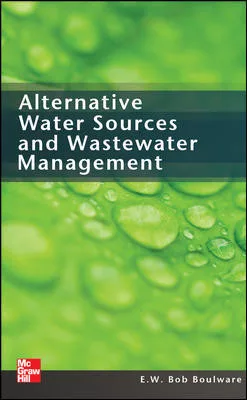James Dipping: Non-chemical water treatment options for Legionella control
Specialty components to further reduce the risk of Legionella — part two.

Victor Borisov/iStock/Getty Images Plus via Getty Images.
In my January column, I began a series focused on chemical and non-chemical additives or technologies that I treat as “must consider” for plumbing engineers in their design practices to reduce the risk of legionella bacteria developing in the domestic water system.
As I mentioned, these topics might not be a code minimum requirement, but as an engineering community, we have a responsibility to uphold the health and safety of the public. Therefore, we should be discussing these technologies for many different building types we come across in our design.
I’ll reiterate that as we consider these tools in our design, engineers must understand that the Environmental Protection Agency (EPA) plays a very significant role in regulating these systems. They state:
- Adding certain water treatment technologies in a premise plumbing system could impact the chemical and microbial quality of the water and change the regulatory status of the premise plumbing system;
- Facility owners or operators who are considering adding treatment to their building’s premise plumbing system may wish to consult with their water supplier to better understand any potential water quality issues before making treatment-related decisions; and
- In addition to the drinking water regulations under SDWA, manufacturers of pesticidal treatment technologies used to control Legionella and other microbial contaminants need to comply with the Federal Insecticide, Fungicide and Rodenticide Act (FIFRA) requirements, which are independent of the SDWA requirements.
The full resource from the EPA can be found here. Much of the information below comes from the EPA’s document, and the many studies included in developing their document. As plumbing engineers, we cannot pretend to be experts in chemistry, which makes becoming experts in these systems very challenging. It is very prudent, in these cases, to leave it to the experts, and the excerpts below are to provide a high-level overview of the systems and some design considerations. I advise that the paper published by the EPA is read in full context for anyone seriously looking to include any system mentioned below in their design.
Another excellent resource soon to hit the market will be ASPE’s Design Methodology to reduce Rick of Legionella, of which I am a working group member.
And now, on to the discussion of NON-chemical water treatment options…
Ultra-violet light disinfection
UV disinfection is a well-established treatment technology for inactivating pathogens present in the environment. In the drinking water context, UV disinfection was initially most widely used in Europe, with hundreds of installations in place by 1985. In North America, UV disinfection has been more widely employed in drinking water applications since 2000 to address health concerns associated with Cryptosporidium. As of the spring of 2008, there were at least 300 PWSs in the United States and Canada with UV installations treating flows 350 gallons per minute.
UV is only effective at inactivating Legionella in the water that flows through the UV reactor. For existing facilities with Legionella present in the piping systems downstream of a UV reactor, supplemental controls such as thermal treatment or chemical disinfection will be necessary
UV reactor validation is used to define the operational conditions under which the pathogens of concern are inactivated for a specific UV reactor manufacturer and model. Validation is a method of determining the operating conditions under which a UV reactor delivers a specified dose. This generally involves initial tests using a surrogate organism (e.g., bacteriophage MS2) rather than the target pathogen (e.g., Cryptosporidium) to establish the dose relationship between the two organisms. The conditions that are examined for full-scale testing to establish dose are flow rate, UV transmittance (UVT) (a measure of the fraction of incident light transmitted through a material) and lamp output. EPA has developed guidance for validation of UV reactors.
There are several important lessons from installations of UV disinfection in hospital settings and
UV installations in general:
UV disinfection can be effective at controlling Legionella in facility piping. In the case of one new facility, a UV disinfection unit was installed on the incoming water supply, and none of the 930 cultures of hospital water were positive. In addition, there were no confirmed hospital-acquired Legionella infections over a 13-year study period;
UV is only effective at inactivating Legionella in the water that flows through the UV reactor. For existing facilities with Legionella present in the piping systems downstream of a UV reactor, supplemental controls such as thermal treatment or chemical disinfection will be necessary; and
UV reactors need to be maintained to remain effective. The quartz sleeves that house the reactors can be fouled by iron, manganese, calcium carbonate or other deposits that decrease UV output. Lamps and other reactor components also need to be replaced periodically to maintain treatment effectiveness. Fouling of the UV lamps was found to decrease effectiveness of the UV treatment. Liu et al. (1995) added filters to prevent scaling on UV lamps installed near the point of use in a hospital’s cold and hot water systems. After treatment with superheat/flush and shock chlorination, and installation of filters to remove particles that foul the UV lamps, the UV intensity of the lamps remained at 100 percent throughout the experiment and the showers remained Legionella-free for a period of three months.
UV disinfection does not produce a disinfectant residual. However, when UV disinfection is applied to waters containing a chemical disinfectant residual, the residual may be diminished following treatment with UV. Therefore, water treated using only UV disinfection may, in some cases, be susceptible to contamination at downstream points. More than one type of disinfection or other control measures should be strongly considered to protect the treated water downstream of UV disinfection.
Design considerations: Excessive turbidity and certain dissolved species inhibit the effectiveness of UV disinfection. Light transmission through water is impaired by particulates. Control valves and reducers should be avoided within five pipe diameters upstream of the UV reactor. Pipe expansion measures should also be avoided for at least ten pipe diameters upstream of the reactor to avoid jetting and swirling flow through the UV reactor. Redundancy or other measures should be built in to allow a UV reactor to be taken out of service for cleaning, lamp replacement and other maintenance. Valves to isolate UV reactors are recommended. In some cases, such as when UV reactors are flooded with cleaning chemicals, special valve arrangements may be beneficial on the outlet and inlet piping for flushing.
Ozone
Ozone is used in drinking water treatment for disinfection and oxidation. It is generated on-site as a gas using either air or liquid oxygen and is then dissolved into the water. When dissolved in water, molecular ozone (O3) is unstable and decomposes to hydroxyl radical, which is a stronger and typically more reactive oxidizing agent than molecular ozone.
The use of ozone in drinking water treatment is widespread throughout the world. As an oxidant, ozone can be used to oxidize iron, manganese, taste and odor compounds, and DBP precursors. It can oxidize organic matter into smaller molecules that are more easily biodegradable. As a primary disinfectant, ozone is more effective than chlorine, chloramines, and chlorine dioxide for inactivation of Cryptosporidium, Giardia and viruses. However, ozone cannot be used as a secondary disinfectant because it decays very rapidly and cannot maintain a residual in a domestic water distribution system.
I have decided that I’ll reserve the superheat and flush techniques for the next article, where I will organize this in a series of emergency remediation tactics used if a legionella outbreak is identified.
Looking for a reprint of this article?
From high-res PDFs to custom plaques, order your copy today!









